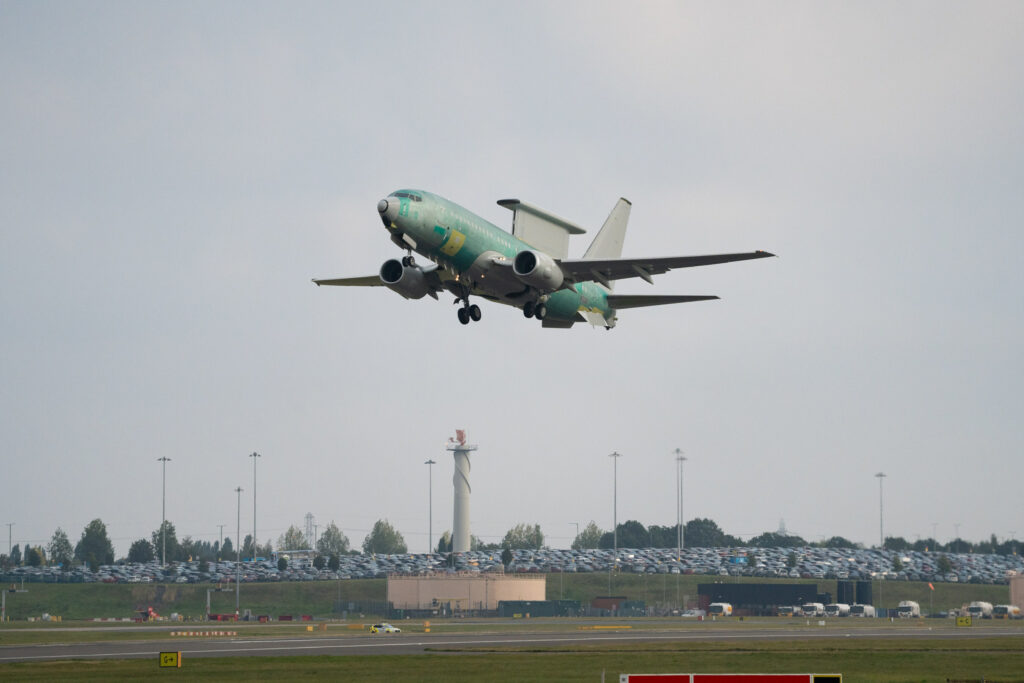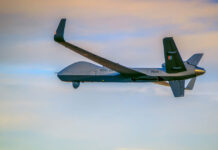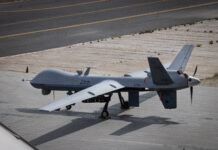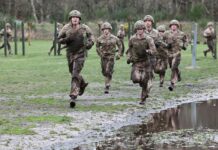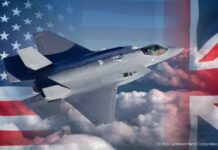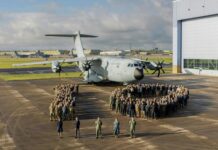The first flight of a Royal Air Force (RAF) E-7 Wedgetail airborne early warning and control (AEW&C) aircraft was successfully completed on 20 September 2024.
A Boeing flight-test crew conducted functional checks during the flight, which took place out of Birmingham Airport, marking a significant milestone in the programme’s test and evaluation phase.
Currently unpainted, the aircraft is one of three Boeing 737 NG aircraft on British soil undergoing modification by a highly skilled team of over 100 people at STS Aviation Services in Birmingham. The type will be known as the E-7 Wedgetail AEW Mk1 in RAF service.
“This safe and systematic functional check flight is an important step for Boeing and the RAF as part of our rigorous and extensive testing and evaluation,” Stu Voboril, Boeing vice president and E-7 programme manager, was quoted as saying in a Boeing press release. “Our team is committed to ensuring the E-7 delivers the safety, quality and capabilities we’ve promised to our customer as we prepare for delivery of the UK’s first E-7 Wedgetail to the RAF.”
Group Captain Richard Osselton, RAF programme director for the Wedgetail added, “Achieving the first flight of Wedgetail is a significant milestone, representing an outstanding effort from the RAF programme team, DE&S [the UK Ministry of Defence’s Defence Equipment and Support organisation], Boeing and STS Aviation. We will now build on this success and look forward to continuing the test and evaluation phase as part of our preparations for the aircraft to enter into service.”
DE&S Director Air Support Richard Murray stated, “This first flight marks a significant milestone for the programme and for our team who have worked tirelessly with our partners to progress what is a hugely complex endeavour. We are moving forward and will be delivering this critical capability to the RAF.”
The E-7 detects and identifies adversarial targets at long range and tracks multiple airborne and maritime threats simultaneously with 360-degree coverage via its Multi-role Electronically Scanned Array (MESA) radar, providing critical multi-domain awareness and command-and-control decision advantage.
“We’re proud of the robust E-7 modification line we’ve stood up in the UK to deliver the RAF’s future airborne early warning and control fleet,” said Maria Laine, president of Boeing UK, Ireland and the Nordics. “We are committed to delivering this crucial capability to support the UK’s national security and contribute toward regional stability.”
The future UK E-7 fleet will operate from RAF Lossiemouth in Scotland, where Boeing’s local suppliers and contractors are nearing completion of the infrastructure facilities to support the aircraft’s introduction into service.
Later this autumn, following a series of flight tests and further evaluation, the aircraft will depart to a paint facility to receive its RAF livery.
The RAF participates in a tri-lateral agreement with the Royal Australian Air Force (RAAF) and US Air Force (USAF) toward co-operative Wedgetail interoperability, capability development, evaluation and testing, sustainment, operations, training and safety.
The RAAF, the Republic of Korea Air Force, and the Turkish Air Force currently operate the E-7. Boeing is also building two rapid-prototype E-7 aircraft for the USAF, while in 2023 NATO announced the selection of the E-7 for its AEW&C mission.
Under a USD 1.98 billion (EUR 1.78 billion) contract announced by the UK Ministry of Defence on 22 March 2019 a total of five E-7 Wedgetails were originally ordered, but under the UK government’s 2021 Integrated Defence Review the UK E-7 order was reduced to three aircraft.
The RAF’s E-3D Airborne Warning and Control System (AWACS) aircraft fleet was retired in 2021, leaving a capability gap until the first E-7 is expected to enter service in 2025.
